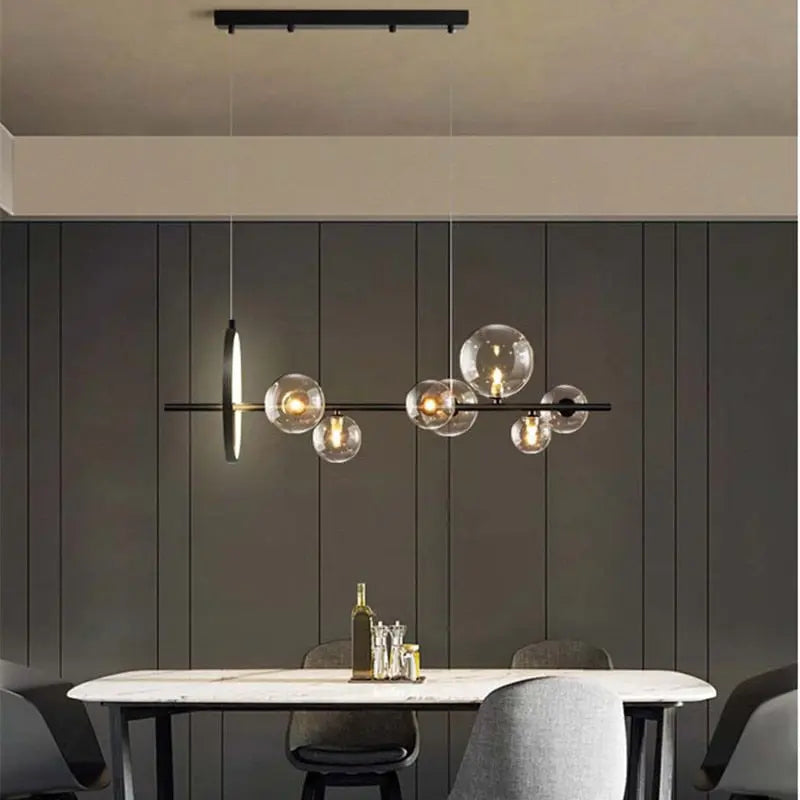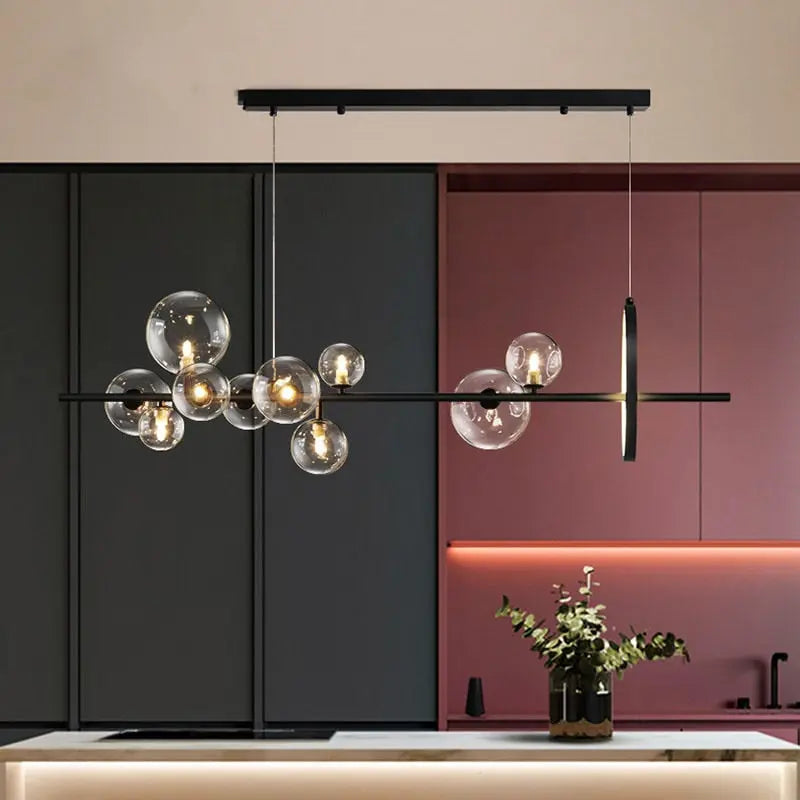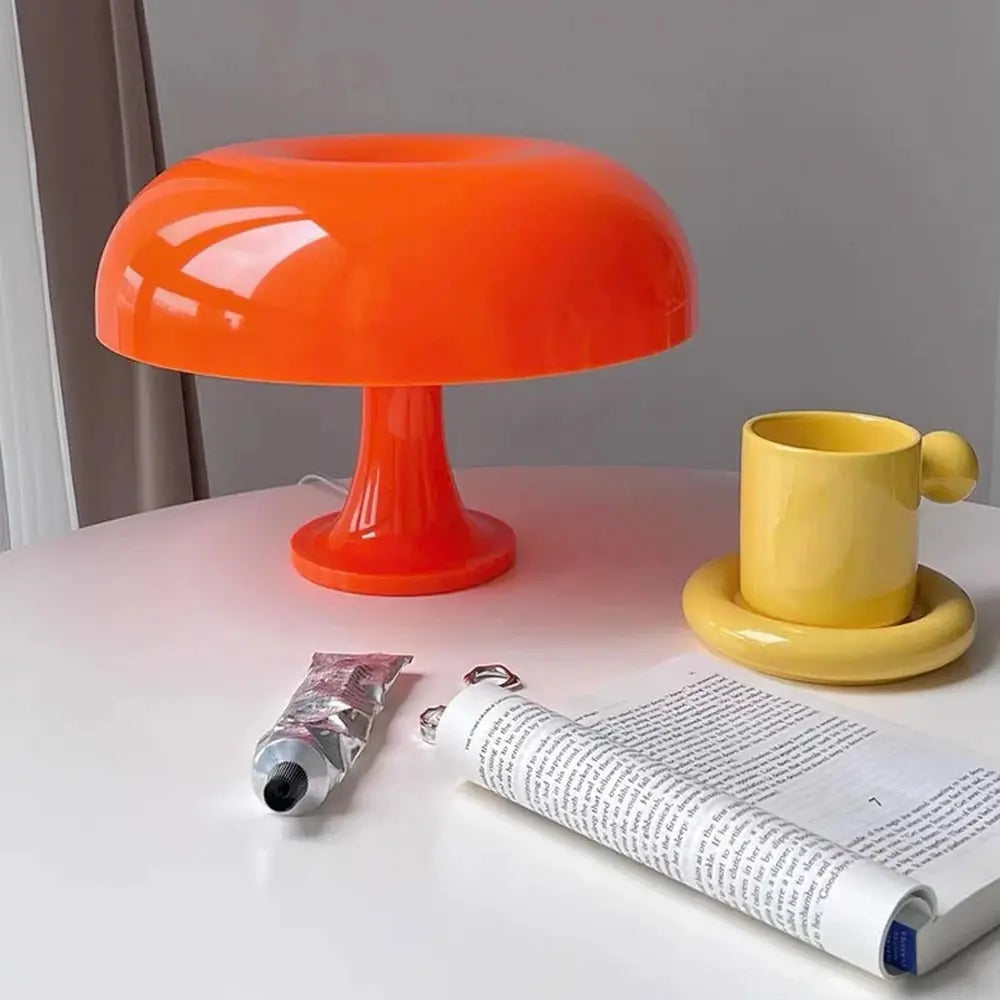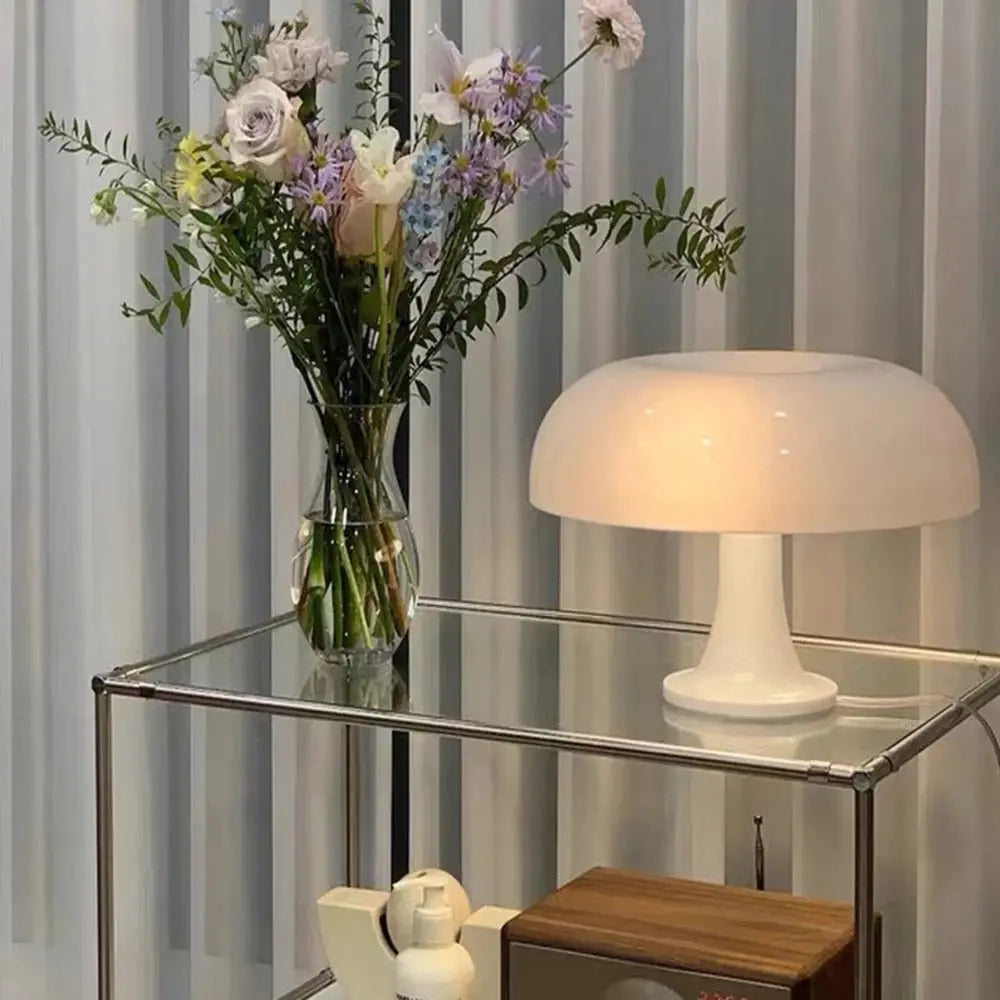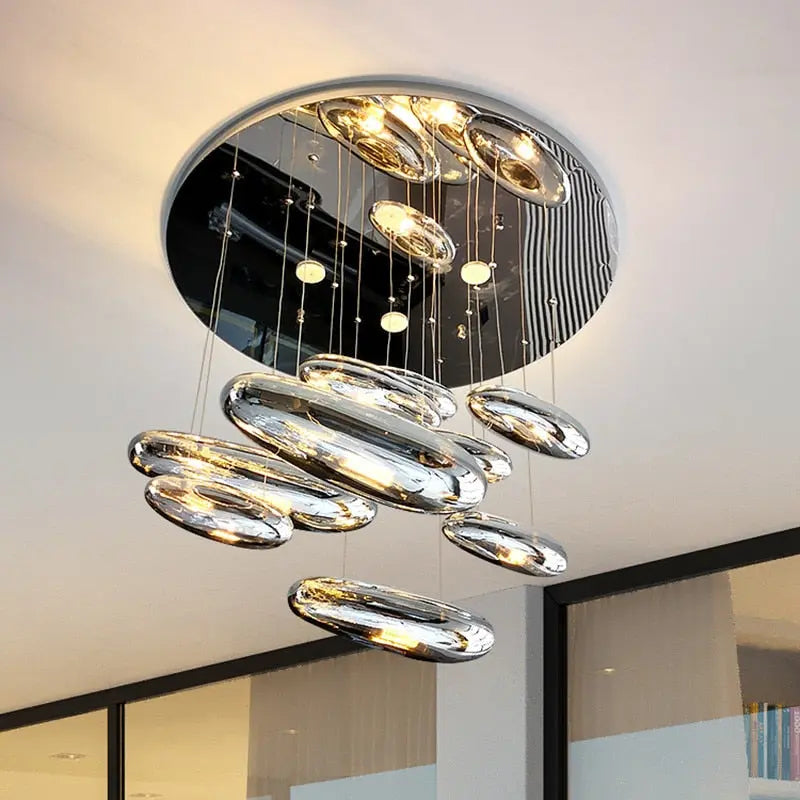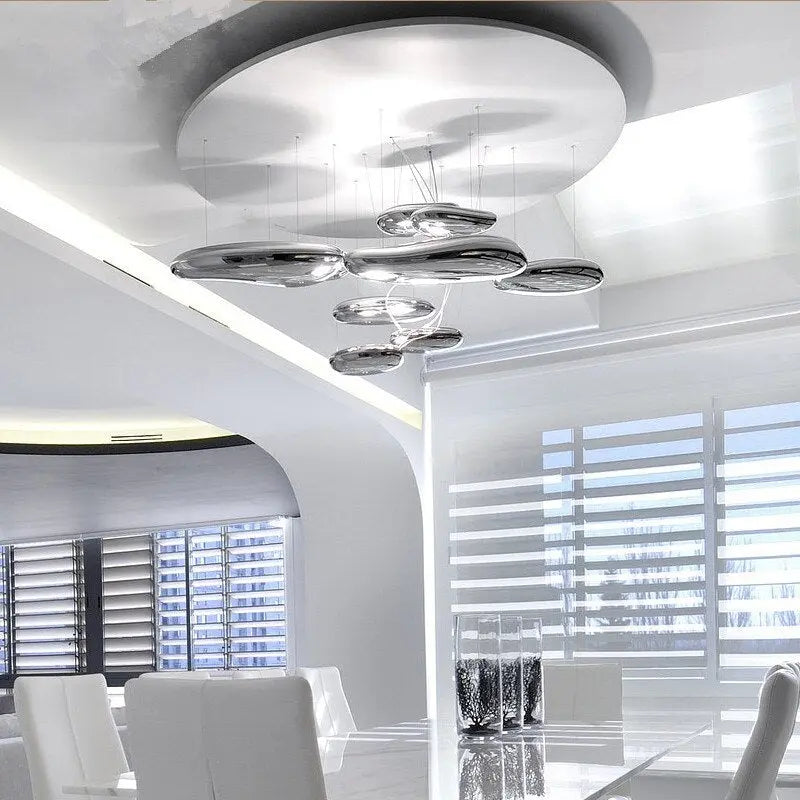Minimalist and modern lighting fixtures have clean lines, simple shapes, and focus on functionality. They're popular in contemporary interior design, offering a sleek look that works with many decor styles. Minimalist lighting often uses neutral colors like black, white, and metallic finishes, with geometric forms and plain surfaces.
Modern lighting shares some things with minimalist designs but can use more styles and materials. It often tries new ideas and unusual shapes. Both types focus on being efficient and practical, making them good choices for homes and offices today.
Key Takeaways
- Minimalist and modern lighting focus on clean lines and functionality
- LED technology has revolutionized lighting design, enabling sleeker fixtures
- Materials like metal, glass, and wood are popular in minimalist lighting
- Smart lighting features are increasingly common in modern fixtures
- Proper lighting placement is crucial for creating balanced, well-lit spaces
Let's explore the key features and differences between minimalist and modern lighting fixtures:
Key Features of Minimalist and Modern Lighting
- Clean Lines: 75% of minimalist lighting designs feature clean lines and simple shapes
- Innovative Designs: 70% of modern lighting designs feature unique shapes and geometric forms
- LED Options: 80% of minimalist lighting designs incorporate energy-efficient LED light sources
- Diverse Materials: 60% of modern lighting fixtures use materials like metal, glass, and wood
- Focus on Functionality: 90% of both styles prioritize functionality and usability
The Evolution of Minimalist Lighting Design

Minimalist lighting design started in the early 20th century, influenced by movements like Bauhaus and De Stijl. These promoted simplicity, functionality, and industrial materials. Over time, minimalist lighting has changed, taking ideas from Scandinavian design, which uses natural materials and soft colors.
Industrial style has also shaped minimalist lighting. Raw materials like metal and exposed bulbs became popular, adding a rugged touch to sleek designs. This mix of influences has created many minimalist lighting options for different tastes and interior styles.
Today, minimalist lighting keeps changing. Designers find new ways to balance simplicity with visual interest. The focus on being eco-friendly and energy-efficient has led to more LED use in minimalist fixtures, making them more appealing to people who care about the environment.
Contemporary chandeliers often show minimalist design ideas. They have streamlined shapes that stand out without being too much. These fixtures show how minimalist lighting can be both useful and visually striking, becoming focal points in modern rooms.
Pendant Lights - Simplicity Suspended

Pendant lights are popular in minimalist and modern lighting design. They hang from the ceiling and often have one light in a simple shade or exposed bulb. Minimalist pendant lights usually have clean lines and geometric shapes. Modern designs might have more unusual forms or materials.
The Spark Ball Stainless Steel Pendant Light is a good example of a minimalist pendant light. It's simple with its round shape and shiny finish. It comes in different sizes and can be used alone or in groups for more impact. The stainless steel is strong and easy to clean, making it good for homes and businesses.
Minimalist pendant lights can be used in many places. They work well over kitchen islands or dining tables, as accent lights in living rooms, or as bedside lights in simple bedrooms. Their basic design fits with different styles, from very modern to more traditional rooms with a modern twist.
When picking pendant lights for a minimalist space, think about:
- Size: Choose a size that fits the room without being too big
- Finish: Pick finishes that match or contrast with other metal things in the room
- Light output: Make sure the light is bright enough for what you need
- Grouping: Think about using more than one pendant to make a bigger statement
If you want to see more minimalist and modern pendant options, check out our pendant lighting collection. It has many styles to fit different tastes and room designs.
Wall Sconces - Minimalism Meets Functionality

Wall sconces are good for minimalist and modern lighting designs. They save space and look nice while being useful. These lights attach to the wall, giving light without taking up floor or table space. In minimalist design, wall sconces often have clean lines and simple shapes that fit in without drawing too much attention.
Modern wall sconces can range from very thin designs to more sculptural pieces that are like wall art and lights combined. The materials are important in how these lights look. Metal sconces, especially in matte black or brushed brass, are popular because they last long and look modern. Glass sconces can add elegance and soften the light.
When choosing wall sconces for a minimalist or modern room, think about:
- Size and how it looks compared to the wall and room
- Which way the light points (up, down, or both) for the effect you want
- Finish that goes well with other lights and metal things in the room
- LED options to save energy and last longer
For a wide selection of wall lights that fit minimalist and modern tastes, look at our wall lights collection. These lights can make rooms more interesting, highlight special parts of walls, or give task lighting in places like hallways, bathrooms, or next to beds.
Chandeliers - Redefining Elegance in Simplicity
Chandeliers in minimalist and modern lighting design are different from the fancy, crystal-covered ones of the past. Today's minimalist chandeliers focus on clean lines, geometric shapes, and a less-is-more approach. These lights often become the main focus in a room, giving both light and visual interest without being too much.
Modern versions of classic chandelier designs might have simpler shapes, unexpected materials, or new types of light sources. For example, a minimalist chandelier might have a group of simple pendant lights arranged in a pattern, or one large shade that makes a dramatic outline.
The Modern Black Glass Chandelier shows how minimalist design can make a striking light fixture:
This chandelier has a unique black glass shade with chrome-plated parts, making a modern piece that adds sophistication to any space. Its sleek design and modern function make it good for different room styles, from dining areas to entryways. The light comes in different sizes and offers multiple lighting options, including cold white, warm white, and neutral light, so users can change the mood to what they like.
When picking a minimalist chandelier, think about:
- Room size and ceiling height to make sure it fits well
- How much light the fixture gives and how it spreads
- If it goes well with the existing decor and colors
- If it can dim for flexible lighting control
If you want to make a bold statement with your lighting, our crystal chandeliers collection offers modern versions of classic designs, mixing minimalist looks with luxurious materials.
Table Lamps - Compact Minimalism for Every Surface
Table lamps in minimalist and modern design provide versatile lighting for various surfaces in homes and offices. These compact lights serve as both functional light sources and decorative items. Minimalist table lamps typically have simple shapes, clean lines, and focus on functionality. Modern designs might have more unique forms or innovative materials.
When comparing minimalist table lamp designs, you'll often find two main types: geometric and organic shapes. Geometric designs might have cylindrical bases, cube-shaped shades, or angular parts that create a bold, structured look. Organic shapes might have curved lines, rounded forms, or nature-inspired outlines that add a softer touch to the minimalist style.
The Modern Mushroom Table Lamp is a good example of a minimalist table lamp with an organic shape:
This lamp has a fun mushroom-inspired design that adds a playful touch to minimalist decor. It comes in bright orange or classic white, making it versatile enough to fit various interior styles. The lamp's small size makes it good for bedside tables, desks, or reading nooks, providing a cozy and inviting light source.
When choosing materials and finishes for modern table lamps, consider options that match your overall decor. Popular choices include:
- Metals: Brushed brass, matte black, or chrome for a sleek look
- Glass: Frosted or clear for a more delicate appearance
- Ceramic: Matte finishes for a soft, understated elegance
- Wood: Natural or painted finishes for a warm, organic touch
Table lamps in minimalist design do more than just give light. They can be like sculptures, adding visual interest to a room even when not turned on. Consider these factors when choosing table lamps for your space:
- Light direction: Adjustable heads for targeted illumination
- Size: Should be in proportion to the surface they'll be placed on
- Shade opacity: Translucent for ambient light, opaque for directed light
- Smart features: USB charging ports or touch controls for added convenience
For those interested in exploring a range of minimalist and modern table lamp options, our table lamps collection offers diverse styles to suit various tastes and interior designs.
Ceiling Lights - Minimalism from Above
Ceiling lights are important in minimalist and modern lighting design. They provide general light while keeping a clean, uncluttered look. These lights come in different styles, with flush mount and semi-flush designs being very popular because they don't stick out much and work in many places.
Flush mount ceiling lights sit right against the ceiling. They're good for rooms with lower ceilings or areas where you want to maximize headspace. Semi-flush designs hang a short distance from the ceiling. They often spread light more and look a bit more decorative. Both styles can use minimalist ideas through simple shapes, clean lines, and understated materials.
The Modern Droplet Ceiling Light is a good example of a contemporary ceiling fixture that shows minimalist design principles:
This light has a series of droplet-shaped lights arranged in a line or cluster. It comes in 5, 7, or 9 light versions to fit different room sizes and lighting needs. The clean lines and simple shapes of the droplets make it visually interesting without being too much, making it a good choice for minimalist interiors.
When comparing modern ceiling light patterns, consider these options:
- Geometric patterns: Squares, circles, or abstract shapes for a bold look
- Linear arrangements: Straight lines or zigzag patterns for a contemporary feel
- Clustered designs: Grouped lights for a more dynamic appearance
- Single large fixtures: Oversized shades or discs for a striking focal point
When choosing ceiling lights for a minimalist space, think about:
- Room size and ceiling height to ensure proper light distribution
- Color temperature options for creating the desired mood
- Dimmability for flexible lighting control
- Energy efficiency, especially with LED options
For those looking to explore a range of minimalist ceiling light options, our ceiling lights collection offers diverse styles to complement various interior designs and lighting needs.
Materials and Finishes in Minimalist Lighting
The choice of materials and finishes is very important in minimalist and modern lighting design. These elements affect how the light looks, how long it lasts, the quality of light, and how it impacts the space. Let's compare some popular materials used in minimalist lighting:
Popularity of Materials in Minimalist Lighting
Metal is often used for minimalist lighting fixtures because it's versatile and durable. Common metal finishes include:
- Matte black: For a bold, contemporary look
- Brushed brass: Adds warmth and a touch of luxury
- Chrome: Offers a sleek, reflective surface
- Brushed nickel: Provides a subtle, sophisticated sheen
Glass is another popular material, used for shades and decorative parts. It can be clear, frosted, or colored, offering various ways to spread light. Wood, while less common, can add a natural, organic touch to minimalist designs, often used with metal or glass parts.
The choice of material and finish can greatly impact how a minimalist lighting fixture looks overall. For example:
- Matte finishes absorb light, creating a softer, more subdued look
- Polished surfaces reflect light, adding brightness and visual interest
- Textured materials can add depth and character to simple shapes
- Mixed material combinations can create interesting contrasts
When selecting materials for minimalist lighting, think about how they will work with other things in the room, like furniture finishes, wall colors, and flooring materials. The goal is to create a cohesive look that enhances the overall design style.
For those interested in adding crystal elements to a modern minimalist design, our crystal chandeliers collection offers contemporary options that balance elegance with simplicity.
Technology in Modern Minimalist Lighting
New lighting technology has greatly influenced the design and function of minimalist and modern fixtures. LED lighting, in particular, has become very important in this field. Compared to traditional light sources, LED offers several advantages:
| Feature | LED Light Sources | Traditional Light Sources |
|---|---|---|
| Energy Efficiency | High (typically 50-80% efficient) | Low (typically 5-20% efficient) |
| Lifespan | Long (up to 50,000 hours) | Short (typically 1,000 to 5,000 hours) |
| Heat Generation | Low (generates less heat) | High (generates significant heat) |
| Size Flexibility | High (can be made very thin) | Low (bulky) |
| Color Options | Many (wide range of colors) | Limited (usually white or yellow) |
| Dimming Capability | Smooth (precise control) | Variable (often not dimmable) |
The small size of LED bulbs allows for more creative and minimalist designs. Fixtures no longer need to fit large, bulky light sources. This has led to very thin pendant lights, sleek wall sconces, and new chandelier designs that weren't possible with traditional bulbs.
Smart lighting features have also become more common in modern minimalist fixtures. These may include:
- Color temperature adjustment: Ability to change from cool to warm light
- Dimming capabilities: Precise control over light intensity
- Smartphone control: Adjust lighting settings via apps
- Voice activation: Integration with smart home systems
- Scheduling: Automated lighting changes throughout the day
These new technologies allow for more customization and control. Users can create the perfect mood for any occasion while keeping a clean, minimalist look.
The integration of smart technology in minimalist lighting has created new possibilities for saving energy and personalizing lighting experiences. For example:
- Motion sensors can automatically turn lights on and off, saving energy
- Daylight harvesting systems adjust artificial light based on available natural light
- Circadian lighting mimics natural light patterns to support human well-being
- Scene setting allows users to create and recall preset lighting configurations
As technology keeps improving, we can expect to see even more new features in minimalist lighting designs. This will further enhance their functionality and user experience.
For those interested in exploring smart lighting options with a minimalist look, our smart lighting collection offers a range of fixtures that combine cutting-edge technology with sleek, modern design.
Styling Tips - Incorporating Minimalist Lighting in Various Spaces
Adding minimalist and modern lighting fixtures to different rooms requires careful thought about each space's function and style. Here are some tips for using these fixtures effectively:
Living Room and Bedroom
In living rooms, use a mix of lighting types to create a layered, versatile look:
- Use a statement chandelier or pendant light as a central focal point
- Add wall sconces for accent lighting and to highlight artwork
- Include floor lamps in reading nooks or beside sofas
- Consider recessed lighting for general illumination
For bedrooms, focus on creating a calm, relaxing atmosphere:
- Choose bedside table lamps with soft, diffused light
- Install dimmable overhead lighting for flexibility
- Use wall-mounted reading lights to save space on nightstands
Kitchen and Dining Area
Kitchen lighting should be both functional and stylish:
- Install pendant lights over kitchen islands or dining tables
- Use under-cabinet LED strips for task lighting
- Consider minimalist track lighting for overall illumination
In dining areas, focus on creating an inviting ambiance:
- Hang a statement chandelier or a group of pendant lights over the dining table
- Use a dimmer switch to adjust lighting for different occasions
- Add a buffet lamp or wall sconces for additional light sources
When styling with minimalist lighting, remember these key principles:
- Balance: Distribute light evenly throughout the space
- Contrast: Use lighting to create visual interest and depth
- Functionality: Ensure each fixture serves a purpose
- Simplicity: Avoid cluttering spaces with too many fixtures
For unique lighting options that can serve as conversation pieces in your dining area, explore our dining room lighting collection.


